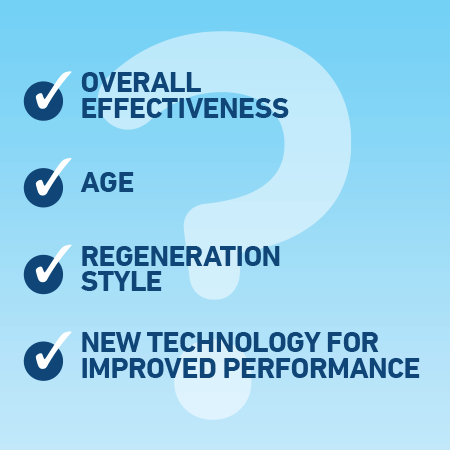
Because water is involved in most of your daily routines, the effects of hard water are felt everywhere—your wallet included. In the short term the costs seem negligible, but over the course of a year they add up.

Unless the color of your water softener mimics something from the disco era (we’re talking harvest gold or avocado green), the indicators that suggest it may be time for an upgrade are much more subtle.

Crusty, white scale buildup on faucets, shower heads and water-using appliances is a common sign of hard water around your home.

